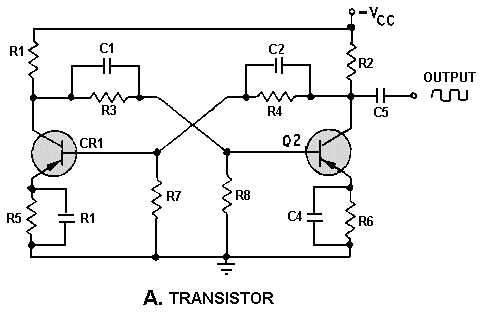3-34
TRANSISTORS
Transistors are semiconductor devices with three or more terminals. The operation of normal
transistors has already been discussed, but there are several transistors with special properties that should
be explained. As with diodes, a discussion of all the developments in the transistor field would be
impossible. The unijunction transistor (UJT) and the field effect transistor (FET) will be discussed
because of their widespread application in Navy equipment. Many other special transistors have been
developed and will be discussed in later NEETS modules.
The Unijunction Transistor (UJT)
The UNIJUNCTION TRANSISTOR (UJT), originally called a double-based diode, is a three-
terminal, solid-state device that has several advantages over conventional transistors. It is very stable over
a wide range of temperatures and allows a reduction of components when used in place of conventional
transistors. A comparison is shown in figure 3-38. View A is a circuit using conventional transistors, and
view B is the same circuit using the UJT. As you can see, the UJT circuit has fewer components.
Reducing the number of components reduces the cost, size, and probability of failure.
Figure 3-38A.—Comparison of conventional transistors and UJT circuits.

